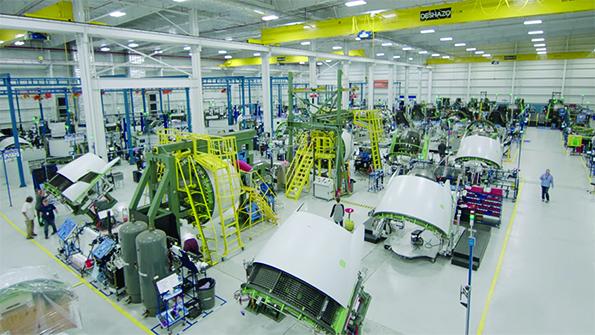Opinion: Top A&D Companies Need To Help The Supply Chain

Alan Mulally shepherded Boeing Commercial Airplanes through the post-Sept. 11, 2001, aerospace industry downturn as its CEO, then led Ford Motor Co. through the financial crisis and Great Recession of 2009 and was named one the 50 greatest business leaders by Fortune magazine. At both Boeing and Ford, Mulally implemented the “Working Together” leadership philosophy, which he outlined at the Institute for Supply Management conference in 2016: Two of the main principles were to put people first and for leaders to propose positive plans. The aerospace sector and its leaders need to implement these main principles in this time of crisis.
The two key points of Mulally’s philosophy are now more important than ever for the aerospace and defense (A&D) industry to consider collectively. The people employed at these businesses are the most important assets for continued innovation and meeting manufacturing demand. The people that make up the supply chain in Tiers 2, 3 and 4 are crucial to the entire industry. A&D manufacturers rely heavily on each other—like a chain where the weakness of one link weakens the entire chain. Many of these companies also have dual purposes and produce multiple product lines for A&D applications for OEMs and Tier 1 suppliers.
The Aerospace Industries Association estimated that the entire A&D industry output at the end of 2019 was $909 billion (see chart). The supply chain was responsible for 44%, or $400 billion, of that output. Eight North American-based OEMs and Tier 1s are critical to the A&D sector. This Big Eight is comprised of four OEMs—Boeing, General Dynamics, Lockheed Martin and Northrop Grumman, totaling $209 billion of output—and four Tier 1 suppliers: GE Aviation, Honeywell, Raytheon Technologies and Spirit Aerosystems, which totaled $144 billion of output. Together, these companies accounted for $353 billion, or 39%, of the total A&D industry annual output.
Likely supply chain challenges in 2021 include depleted inventories, increased payroll costs and higher debt payments. These in turn will create cash flow and liquidity issues that will be exacerbated when the aerospace sector starts recovering and demand for increased production returns.
If up to 20% of smaller businesses in the supply chain close, go bankrupt or are consolidated, as some analysts predict, critical jobs will be lost, and opportunities for future generations will become limited and likely will not be replaced.
In the spirit of Mulally’s leadership philosophy, the Big Eight should work together to develop a comprehensive strategy, proposing positive plans for distressed suppliers that serve multiple Big Eight companies. The Big Eight should work together and establish an “A&D Supply Chain Committee” with participation from the senior supply chain executives from each of those companies. This committee should be collaborative and transparent about all aspects of the supply chain to ensure that the committee aids suppliers and programs that show signs of distress.
This assistance and collective action for distressed suppliers should be done through putting people first and creating a positive and comprehensive plan based upon data. Mulally’s leadership principles are very applicable to this situation and should be used to proactively secure the A&D supply chain for decades to come.
Alex Krutz is the managing director at Patriot Industrial Partners, an aerospace and defense advisory firm.
The views expressed are not necessarily shared by Aviation Week.




